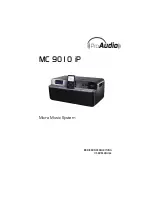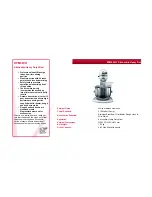
9 / 14
2.8.
AUTO BPM Counter
The integrated auto BPM counter is an extremely useful feature. It ensures smooth transition from
one track to the next. It can calculate the tempos of various tracks in BPM (beats per minute). Both
BPM counter sections are identical and both show the BPM value of the two stereo channels routed to
the crossfader.
The tempo of the track assigned by using the ASSIGN AorASSIGN B keys is shown in the respective
DISPLAY (31). Several tempo changes in one track would produce a constant display of various
BPM values and thus lead to unnecessary confusion. That s why each beat counter section has a
SYNCLOCK button 32 that can be used during the song to limit the range of possible tempo values.
This makes sense if the counter has already calculated a realistic value. You can do the same
manually with the BEATASSIST button (33). Push this button at least three times in sync with the song
s tempo, and the tempo you tapped appears in the DISPLAY. The BEAT ASSIST and SYNC LOCK
buttons are each equipped with a LED.
To exit SYNC LOCK or BEAT ASSIST mode, simply press the SYNC LOCK key in both channels
once again.
When no signal is present (or when the signal level is too low), the BPM display shows only
dashes. When the signal is present but can not be identified, the display shows 160 BPM and
then shows the dashes. The beat counter then attempts to get another readout. Therefore.
160 BPM is no usable value; rather, it is simply an error message when the signal can not
be analyzed.
2.9.
Connections
(34)These are the LINE and CD inputs respectively, used for connecting tape decks, CD or MD
players etc. Unlike other channels, channels 4 and 5 feature two line inputs.
(35)The PHONO inputs for channels 1 through 3 are intended for connecting turntables. Channels
1 through 3 can be switched over to line level (see (36)).
(36)Using the PHONO/ LINE switches, you can change the input sensitivity of the PHONO inputs
on channels 1 through to line level (switch pressed). This way, you can even connect a tape
deck or a CD player to the PHONO inputs.
IMPORTANT : Always pay attention to the correct position of the PHONO/LINE switch when
connecting a line level signal to a phono input. The switch must be in its pressed
position (LINE)! Otherwise,overdriving may lead to permanent damage
to the phono input.
































